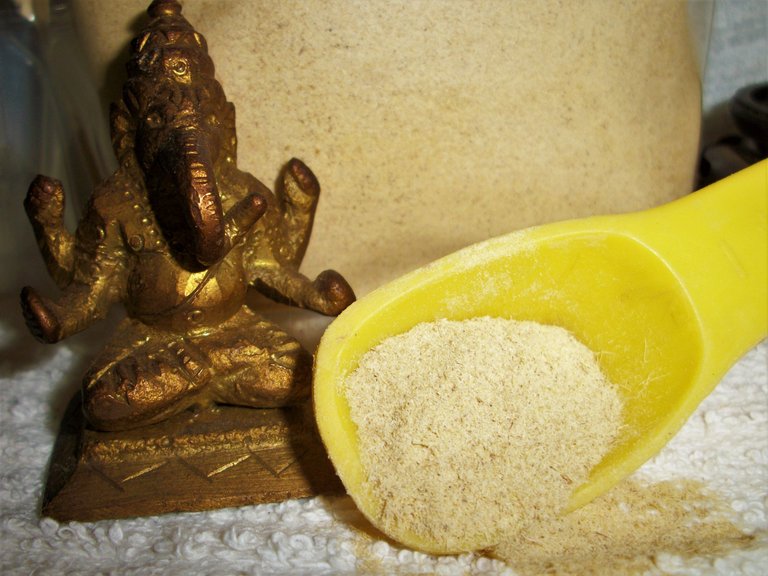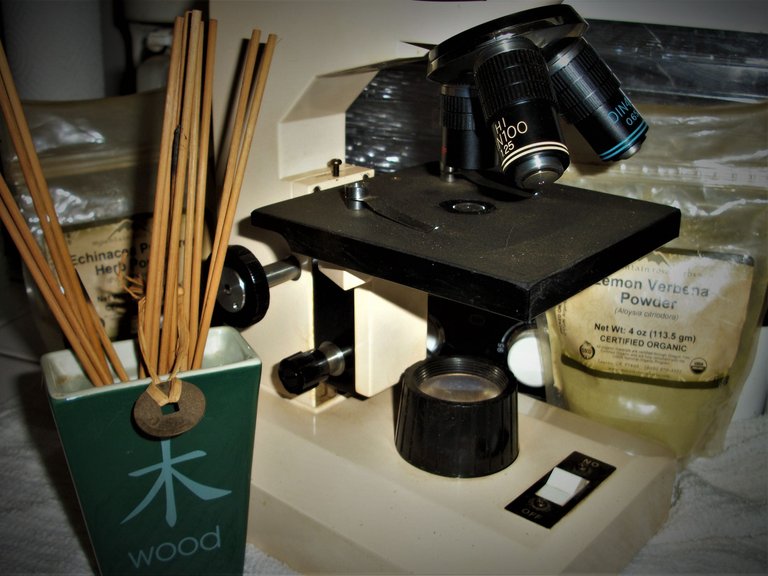Since I've enjoyed writing about the health benefits of certain herbs and supplements lately within the @NaturalMedicine Community on Hive.io, I'm pleased to offer you information about the newly popular Adaptogenic herb Ashwagandha.

Our community founder @RiverFlows, encouraged me to write a piece on this wonderful, healing herb that she too is familiar with, through use and presently growing Ashwaganha in her garden.
My history with Withania Somnifera goes back twenty-five years or so. I've personally used it, along with dispensing the herb to others in various forms (Tinctures, Extracts, Bulk Powder, Capsules etc.) through my small specialized Lab and distribution service - that I no longer participate in.
Ashwaganha (Withania Somnifera) is also known by these common names - listed below:

Though I'm no longer in the business of helping to get herbal products into the hands of people in need, I still occasionally help a family member, friend or associate with an herbal concoction, when asked.
In the past, I have even had Physicians as clients. They sought me out for both personal reasons and patient care in some instances. In this day and age, a medical professional has to take great care with recommending an alternative therapy for fear of loosing their license to practice medicine. Yet... some were open enough to try, older traditional methods of treatment and cure.

In recent days, Ashwagandha has been gaining in popularity here in the West for a variety of health issues, though the herb has been used for many centuries by health practitioners in the East - especially in India and surrounding areas.
The root of W. somnifera is used to make the Ayurvedic tonic ashwagandha, which has been translated to "smells like a horse."2 Ashwagandha has been used as an adaptogen, diuretic, and sedative and is available in the United States as a dietary supplement. Other parts of the plant (eg, seeds, leaves) have been used as a pain reliever, to kill lice, and in making soap. The fresh berries have been used as an emetic.2, 3
The principal bioactive compounds of W. somnifera are withanolides, which are triterpene lactones. More than 40 withanolides, approximately 12 alkaloids and several sitoindosides have been isolated and identified from W. somnifera. The withanolides are structurally related to the ginsenosides of Panax ginseng, hence the common name "Indian ginseng."3, 4 Withanine and somniferine are among the alkaloids.67 Chemical constituents for the roots, fruits, seeds, and stem include withanone; withaferin A; withanolides A, D, an G; and sitoindosides IX, X, VII, and VIII. High performance liquid chromatography techniques to quantify constituents have also been established.2, 3, 4
Source
Here are some other interesting claims from different sources, regarding the effectiveness and uses for Ashwagandha:
It's a Powerful Anti-oxidant
Aids Immune System's Healthy Functioning
Acts to Reduce Inflammation
Reduces Cortisol Levels (Stress Hormone)
Reduces Stress and Anxiety
Helps to Lower Blood Sugar Levels
Can Improve Brain Function/Memory
Helps Alleviate Symptoms of Depression
Serves to Lower Cholesterol and Triglycerides
It might be important to note, that it is a common practice to add a bit of black pepper to any ingestible Ashwagandha supplement for increased absorption/utilization of it's compounds.
I've seen reports that, black pepper can aid absorption of Withania Somnifera by up to 25%... I don't know what studies gave rise to this conclusion, but it is well known that certain bio-chemicals react better with another added, acting as a catalyst, synergistically.
Dosage
One of the most challenging things with respect to internal application of an herb, is determining dosage for best results.
Often... on a personal level it requires trial and error, making adjustments accordingly. If you choose a commercially prepared and packaged Ashwagandha product, I suggest you start with recommendations provided by supplier.
Personally, I mostly use the base, full-spectrum root powder and add about three grams to water or protein shake. I may also use Ashwagandha in soup or other food recipe.
My use is mostly for helping to maintain homeostasis (Balance of internal biological functions)
Keep in mind that, herbs can vary in quality, depending upon growing conditions, harvesting practices, handling, processing, storage and age of a final product.
For this reason, you would probably do best by purchasing Ashwaganha from a source that has demonstrated experience and LOVE for herbs. Avoid the "Johnny come lately" with hyped sales pitches...
Here's hoping you found this article interesting and helpful in some way. I enjoyed writing it.
Until next time, my friends; be well and enjoy your life.
Ciao

Natural Medicine Community
Written by
@AngryMan
Disclaimer: This information is not specific medical advice and does not replace information you receive from your health care provider. You should talk with your health care provider for complete information about the risks and benefits of using this product.
I never heard about this herb, interesting.
Thank you...😎
I started taking ashwaganda a while ago for back pain. I'm not sure if it's actually effective for that, despite many claims that it is. I think it did seem to be at first. I noticed more that it has a marked effect improving my mood. I now take it daily and it seems to help CBD be more effective, as does turmeric, but can't be sure about that. Taking the three every day seems to work for me though.
Thanks for your input @geekpowered about your experience with ashwagandha for back pain. Back pain - especially in the lower back, is unfortunately a very common problem.
Though ashwagandha can be a powerful tool to help alleviate painful inflammation, it's effectiveness lays heavily upon quality and dosage. Another factor is absorption capability by the body. Does your product contain any black pepper or pepper extract?
Working alongside CBD and turmeric is not surprising. This can be a great combination. A 'quality' CBD product alone can produce symptomatic relief and in some cases CURE; depending upon root cause of the pain (injury or disease)
I'm not surprised that it helped elevate your mood. It is known for that particular affect and may accentuate the result in combination with other mood modifying herbs - such as St. Johns Wort.
I'm happy to hear that you're exploring natural remedies and wish you well.
I did NOT know about ashwagandwa and black pepper!!!! I love this plant so much. It's in the herbal blend I'm taking at the moment for stress, anxiety, sleep and hormones. You can't really take TOO MUCH of it - my naturopath said the same, so I have it in my 'not coffee' as well as in smoothies, and in my herbal blend. I can't wait to actually harvest it - the plants aren't big enough yet.
Hi @riverflows, thanks for stopping by.
Yes, black pepper and pepper oil is a highly regarded and used fairly widely in Ayurvedic medicinal compounds, though I'm not sure 'how' it accentuates bio-availability of the other herbs it's added to. Adding some to turmeric for increased effect has always been commonly practiced in India, too.
The root has compounds which resemble 'Panax' in ginseng, so probably just as beneficial for balancing bodily processes; hence... the alt. name 'Indian Ginseng'...😎
No toxic levels known, yet caution given to products that combine leaf and seeds, rather than 100% root.
I had such good results from it I love the stuff at my age.
Thank you @julescape for your input. I'm happy to hear that your having a good response from ashwagandha use...😎